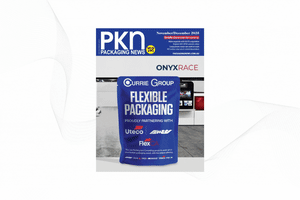Food engineers at Monash University have created a ‘super-yoghurt’ from Australian sweet lupins and oats, aiming to rival dairy in taste and texture while delivering more nutrition than typical plant-based yoghurts.
The study aimed to formulate and prepare lupin-oat based yoghurt using three different combinations of probiotic lactic acid bacteria. The formula is a major advancement in the plant-based food sector, due to its fast fermentation time, dairy-like texture, and unique nutritional profile.
Published in the Journal of Food Hydrocolloids, it found the lupin-oat milk yoghurt fermented with a combination of Lactobacillus plantarum and Bifidobacterium probiotics was the standout.
Led by associate professor, Sushil Dhital, and PhD candidate, Damodar Dhakal, at Monash's BioPRIA institute, the study analysed yoghurts over seven days of refrigerated storage after fermenting them with various combinations of probiotic strains. The investigation aimed to understand how different probiotic mixtures influenced yoghurt quality over time.
The resulting yoghurt underwent various instrumental analyses to assess its physicochemical, textural, rheological, and structural properties, ultimately evaluating its shelf life. Sensory evaluation was conducted by a semi-trained panel of 20 individuals at Monash.
Dhital said the high protein and fibre content of lupins, along with the unique probiotic combination used in the yoghurt, contributed to its thick creamy palate, along with its impressive nutritional profile and texture.
"Our analyses show oat-lupin yoghurt is equally as natural and nutritious as dairy yoghurt,” Dhital said.
“It’s also lower in saturated fats compared to most coconut-based yoghurts, and potent with other micro-macro nutrients and beneficial bacteria that make it an enticing alternative for the yoghurt industry.”
The Australian sweet lupin is iconic to Western Australia, which is responsible for 85 per cent of the world’s lupin crop. Once an ancient staple, lupins are experiencing a resurgence in popularity, valued for their high protein content and nutritional benefits, and their ability to improve soil health makes them a sustainable option.
As the first yoghurt made from raw lupins and oats, Dhakal said the development represented a significant step forward in plant-based food innovation.
"This is a next-generation plant-based yoghurt I think consumers have been waiting for,” he said.
“Lupin, an ancient legume, has been cultivated to create the first oat-lupin yoghurt that rivals the creaminess, protein and fibre content of traditional dairy products. In yoghurt made with a particular combination of probiotic species, we observed accelerated fermentation times, and a texture and mouthfeel that mimicked dairy yoghurt.
“Manufacturers interested in developing the lupin-oat yoghurt into a commercial product are free to utilise our research and we are happy to offer technical support to industry.”
Dhakal also said further research could enhance texture and flavour development as well as explore the yoghurt properties.






